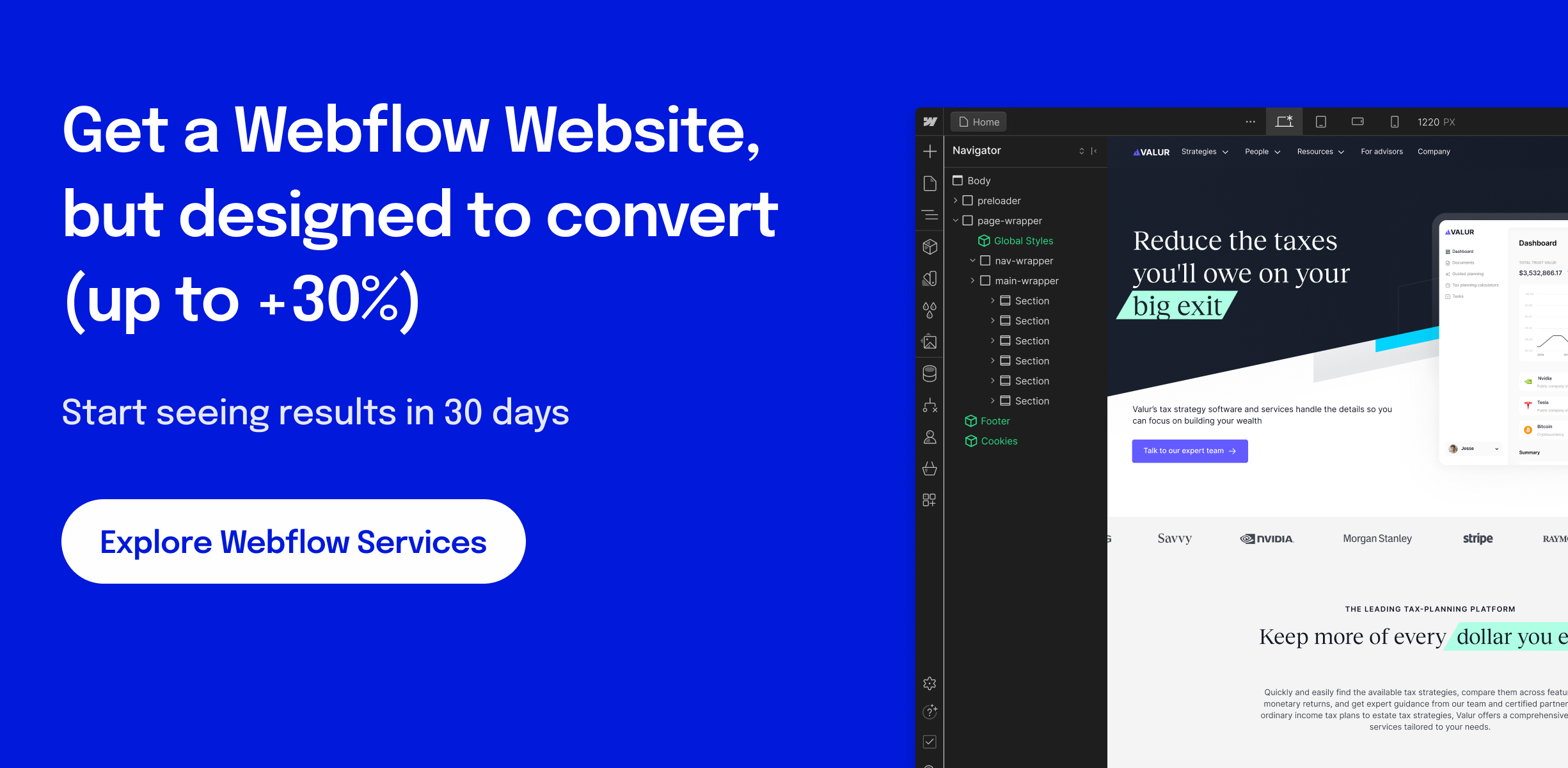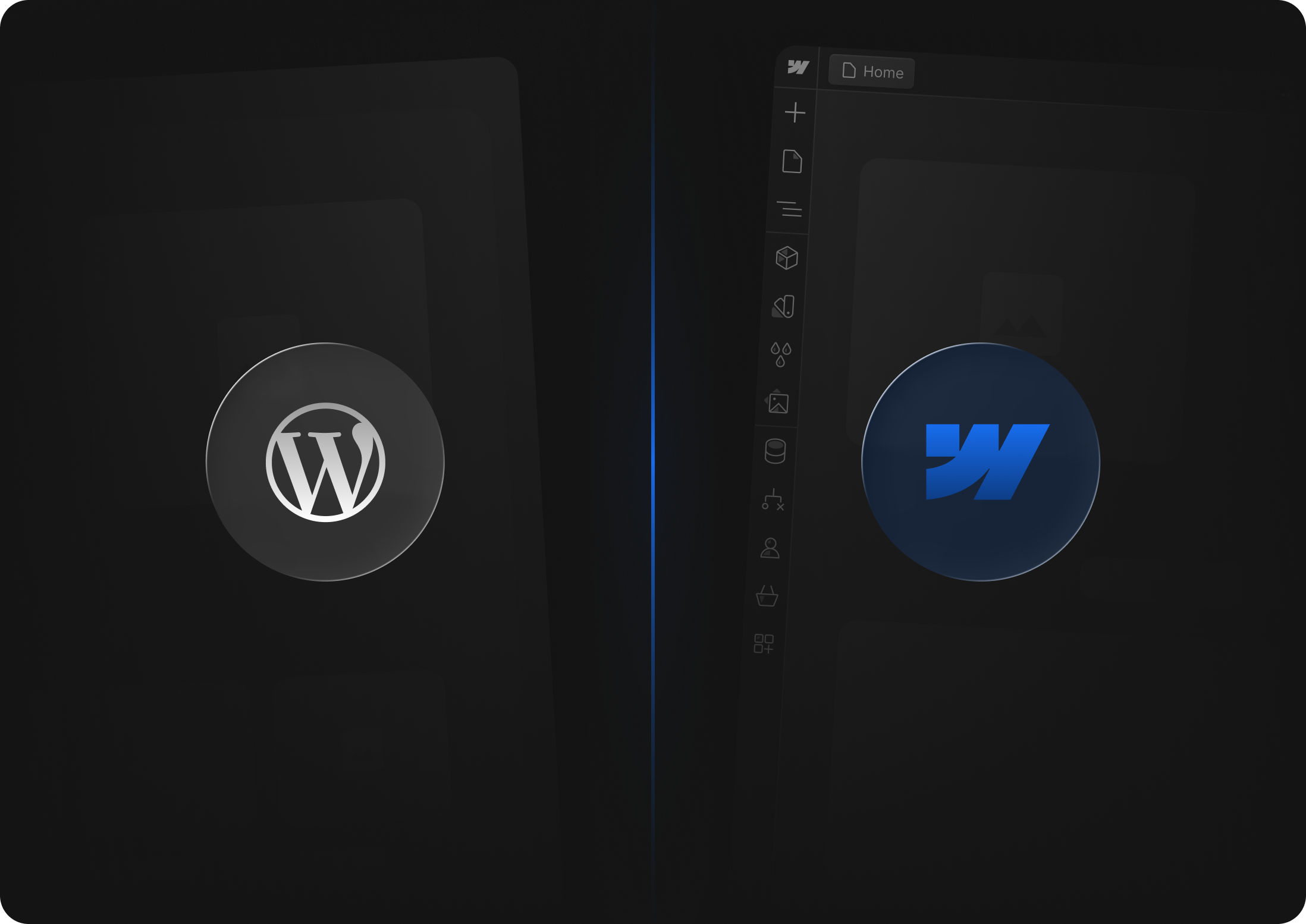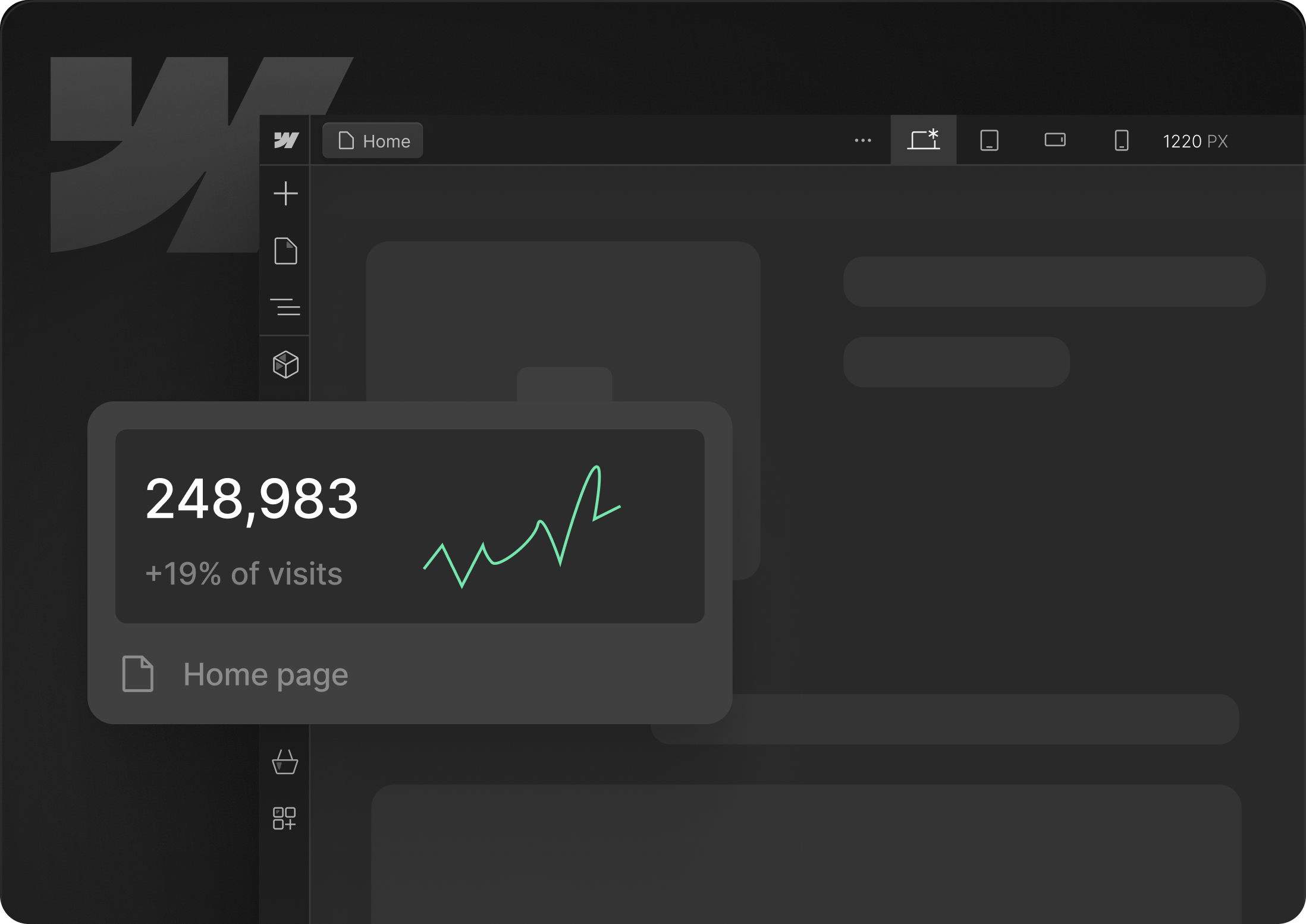Laying the Foundation
Every website you launch is the base of your digital empire. The platform you choose today can either accelerate your growth or slow you down. With countless options available, two giants stand out: Webflow and WordPress.
Both power millions of sites worldwide, but each caters to different needs. Startups that move at lightning speed, marketing teams craving frictionless iterations and content-driven businesses each have unique requirements. Which tool answers your specific ambitions?
Webflow: Speed, Design and Autonomy
Webflow leads the no-code revolution. Its intuitive, designer-focused interface delivers total creative freedom, lightning-fast execution and zero dependency on overburdened development teams.
In Webflow you can spin up high-impact landing pages within hours and scale to full websites that grow alongside your business. Built-in animations, microinteractions and fully custom layouts let you craft unique experiences—no code required.
This platform is ideal for startups that need to iterate rapidly, marketing teams seeking effortless A/B tests, and designers who thrive on experimentation. AI-guided onboarding smooths the learning curve, while automatic updates and reliable support free you from routine technical chores.
That said, Webflow’s CMS—though powerful—is not optimized for massive content portals out of the box. As your editorial team expands, you may need to plan for additional seats and consider the associated costs.
WordPress: Flexibility (with a Few Caveats)
WordPress is the undisputed veteran of the web. Since its 2003 debut as a blogging platform, it has evolved into the engine behind over 40% of all websites on the internet.
Its flexibility is legendary: thousands of free and premium themes, plugins for virtually every feature imaginable, and a massive, active community give you the power to build almost any type of site.
This makes WordPress ideal for organizations that prioritize aggressive content and SEO strategies—managing extensive blogs, complex category structures and advanced on-page optimizations.
However, the shine wears off when you factor in hosting management, constant updates, security hardening and performance tuning. For genuine customization beyond standard themes, you’ll need coding expertise or a developer on retainer.
Making the Right Choice
Selecting the best platform comes down to your primary objective. If time-to-market, iterative testing and pixel-perfect design drive your roadmap, Webflow will keep you agile and autonomous.
If your strategy hinges on massive content output, advanced SEO tactics and you have a technical team ready to manage infrastructure, WordPress offers unmatched extensibility.
Both platforms deliver immense value—but the one you choose should align with your team’s skills, your growth targets and the resources you’re ready to invest.
Tailoring Your Platform to Your Needs
For enterprises, high-growth startups and agencies that rely on a unified design system and seamless collaboration, Webflow is the clear choice. Its visual CMS, multi-region hosting and API integrations scale effortlessly as your team and content library expand. You get pixel-perfect control over every element, combined with the power to roll out new pages and features without waiting on developer sprints—ideal for companies that demand both speed and consistency at scale.
Even for leaner marketing teams or small businesses, Webflow offers immense value. With prebuilt component libraries, AI-guided layouts and built-in SEO tools, you can launch conversion-focused landing pages, campaign microsites or lightweight e-commerce experiences in days, not weeks. The investment pays for itself in flexibility: as your traffic grows or your messaging evolves, you won’t need to rip and replace—everything adapts in place.
That said, for solo entrepreneurs or content creators on a shoestring budget, a well-chosen WordPress template can serve as a practical launchpad. With minimal setup costs, you can spin up a professional blog or portfolio, then migrate to Webflow when your audience and revenue streams justify a more robust, future-proof platform.

Our perspective
Webflow is a newer platform that’s built on modern architecture—meaning you get continuous updates, enterprise-grade security, and a scalable foundation that grows with your needs. With built-in SSL, global CDN, role-based permissions and automatic versioning, you don’t have to bolt on plugins or manage hosting yourself. The result is a rock-solid site that stays fast, secure and reliable as traffic spikes or your feature list expands.
For lean marketing teams, startups and in-house creatives, Webflow’s component libraries and AI-driven layout suggestions let you launch polished landing pages and campaign microsites in days, not weeks. And because everything lives in one unified visual editor, you avoid the maintenance headaches of plugin conflicts, core updates or manual security patches.
That said, solo entrepreneurs or content-focused creators on a very tight budget may find a well-selected WordPress theme an expedient entry point. It can get you online quickly with minimal up-front costs. But be mindful that as soon as you need advanced customizations, faster load times or enterprise-level reliability, you’ll hit the limits of a template-driven system—and that’s when Webflow’s modern, all-in-one tooling truly shines.
We understand the frustration of rigid platforms that stall marketing campaigns or require weeks of development for simple updates. That’s why we chose Webflow: its speed, flexibility and robust security are precisely what our clients need to stay ahead in fast-moving markets. With Polonio by your side, you’ll move faster, mitigate risk, and see real impact on your bottom line—immediately.
Polonio Offers Seamless Migration from WordPress to Webflow
When you’re ready to move your site from WordPress to Webflow, Polonio makes the process straightforward and reliable. We carefully map your existing content, designs and SEO settings into Webflow’s modern CMS—preserving search rankings and brand consistency without any downtime.
Our experts handle every detail, from data migration and pixel-perfect layout recreation to domain configuration and performance optimization. The result is a secure, high-performance Webflow site that’s easy to update and built to scale, so you can focus on growing your business instead of wrestling with plugins or hosting headaches.
Want to kickstart your journey in Webflow?
Imagine launching a high-impact site that not only looks stunning but also drives real business growth—all within a month. At Polonio, we partner with startups, enterprises and agencies that demand rapid, measurable results.
Ready to kickstart your journey in Webflow? Our proven 30-day launch framework delivers tangible ROI in 30 days or less—whether you need a razor-sharp, conversion-focused landing page or a full Webflow build that scales effortlessly and turns visitors into customers. Let’s make your next project your fastest win yet.







